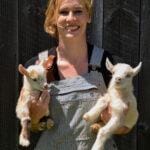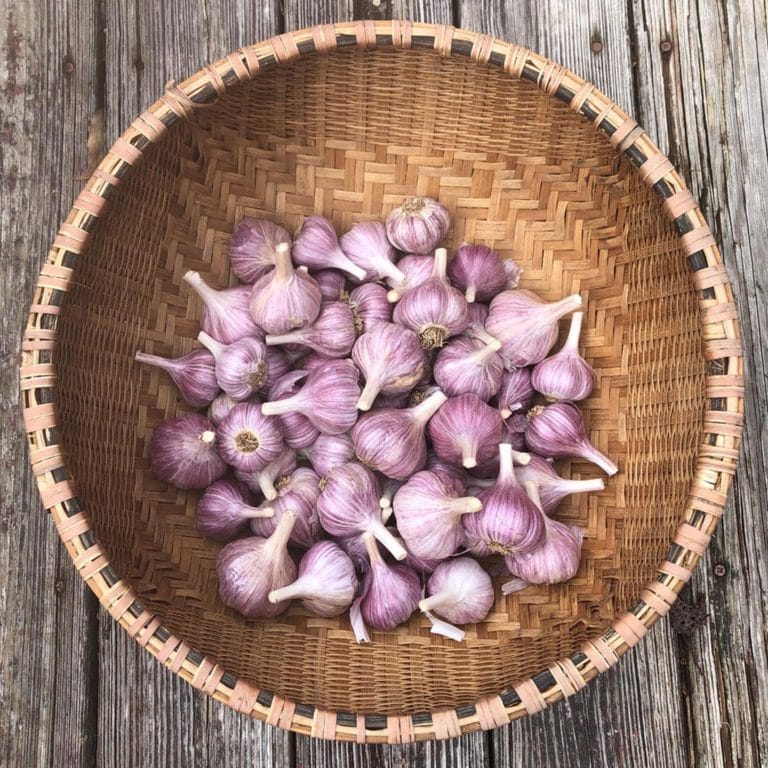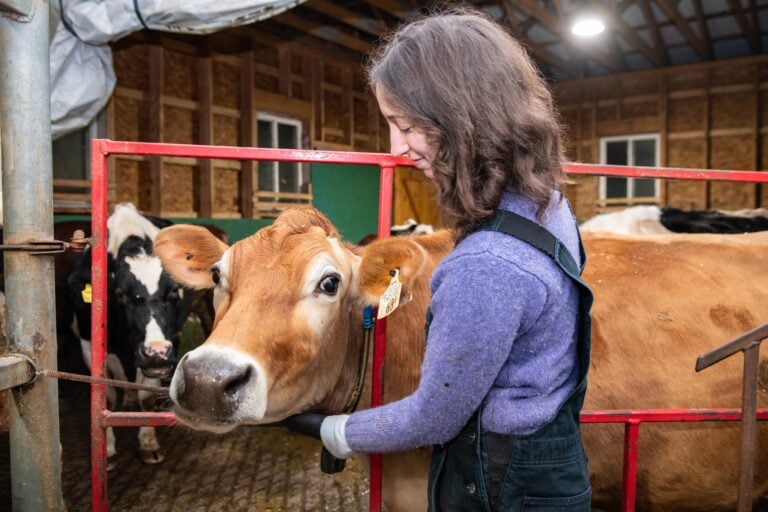Before you can pour a glass of milk or garnish your cheese board with tasty morsels, the dairy industry has to deal with a lot of poop. Finish your yogurt and consider this: A single cow can excrete a hundred pounds of manure in a day. If you’ve ever driven by a dairy farm, you have most likely noticed that the whole facility seems to revolve around manure management: equipment to move it, places to put it, and the ever-present smell of it.
According to the EPA, cows’ active bowels are also responsible for greenhouse gases; their burps and farts make up 10%–15% of the world’s methane emissions. A slice of Brie might make your mouth water, but the efforts to make that slice reverberate: farmers toiling through manure, piles of feces building up, as the planet gets warmer and warmer.
Thankfully, Mainers are creative in their poop problem solving. Enter the biodigester. An anaerobic biodigester can turn a smelly, steamy pile of manure into a rich combination of natural gas, fertilizer, and solids. Biodigesters have been used in some form for centuries, ever since humans first realized that we could extract flammable gases from waste in the late 19th century. But the idea of a biodigester to process cow manure and produce natural gas was new to Maine when Stonyvale Farm in Exeter started building theirs in 2011.
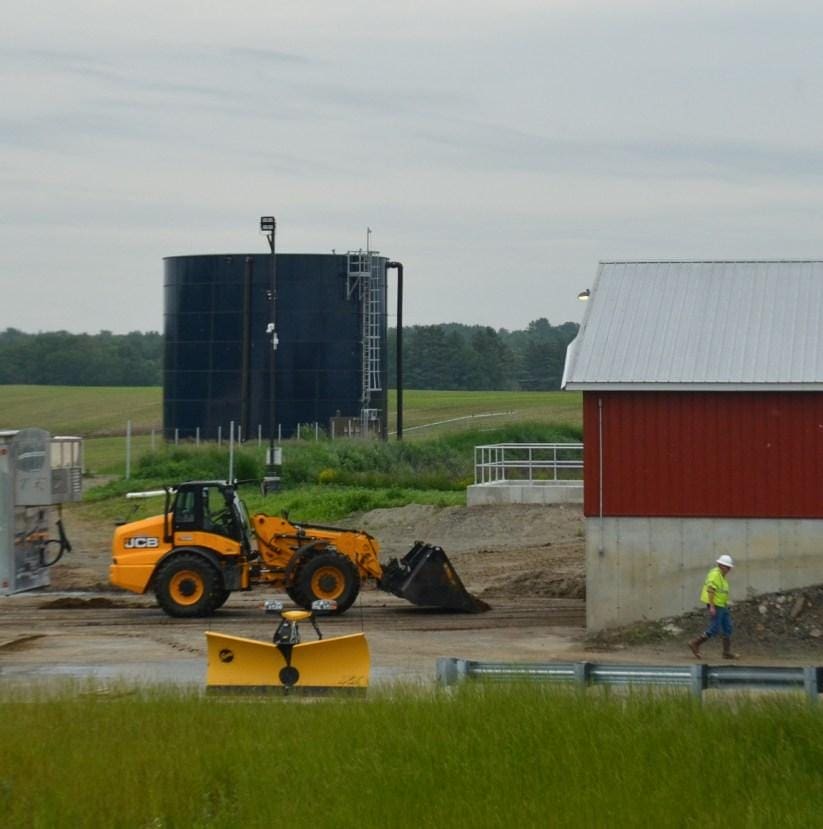
What the biodigester offers is a better way to manage the mountains of cow manure on a dairy farm, and a massive step forward for the sustainability of dairy farming.
“Digestion is well known as a good manure management process,” explains John Wintle, the manager of Stonyvale Farm’s Exeter Agri-Energy biodigester and part of the family that owns the farm. “It reduces the smell and makes the manure easier to handle.”
Stonyvale Farm is a fifth-generation dairy farm, encompassing nearly 5,000 acres and milking 1,000 cows daily. Despite these numbers, they ran into a problem with the biodigester idea. The excrement from a thousand cows only turned into 200–250 kilowatts of electricity, well below what they needed to justify the massive project. For perspective, that amount would run a standard refrigerator for about two hours.
To solve this problem, Wintle and his family turned to food waste. When cow manure enters a biodigester, it has already been digested once, with much of the potential energy within the material removed by the cow. But raw food waste is undigested, giving it the highest potential for biodigester processing.
Founding a companion company called Agri-Cycle Energy, Stonyvale Farm began to collect, depackage, and process food waste from companies around Maine. Today they service all Hannaford Brothers supermarkets, as well as other groceries, hotels, and restaurants around the state. Thanks to the addition of food waste to their biodigester project, the Exeter Agri-Energy project has grown since its installment in 2011. In 2017, they installed their third digester vessel with a capacity of 2.2 million gallons, adding to their existing digester vessels, which hold 400,000 gallons each.
While the family at Stonyvale Farm turned to food waste to create an efficient biodigester, other farms around the state were still coping with piles of cow manure in old-fashioned ways. The majority of larger dairy farms flush or scrape their cow waste, then store it in dry lots or lagoons, eventually using it on their fields or selling it as fertilizer. The longer the manure is stored, the more methane it emits, and without a biodigester, manure will often sit for six months to a year.
The idyllic town of Clinton, Maine, is home to more dairy cows than people. Flood Brothers Farm LLC houses more than 3,000 dairy cows, plus all the manure that they produce. It’s the largest dairy farm in Maine, but only one of four family dairy farms in Clinton, which is known as the state’s dairy capital. While the rest of Maine’s 158 dairy farms are scattered up and down the state, from Madawaska to Kittery, Clinton is the sweet spot for cow farming in Maine.
The prime location of Flood Brothers Farm was one of the reasons that Peaks Renewables, a subsidiary of Summit Utilities Inc., approached them about installing a biodigester for cow waste. The third-generation family farm was a perfect fit because of their passion for community, sustainability, and cooperation.
“The idea was, how do you take advantage of existing systems and put them to good use?” explains Angus King III of Peaks Renewables.
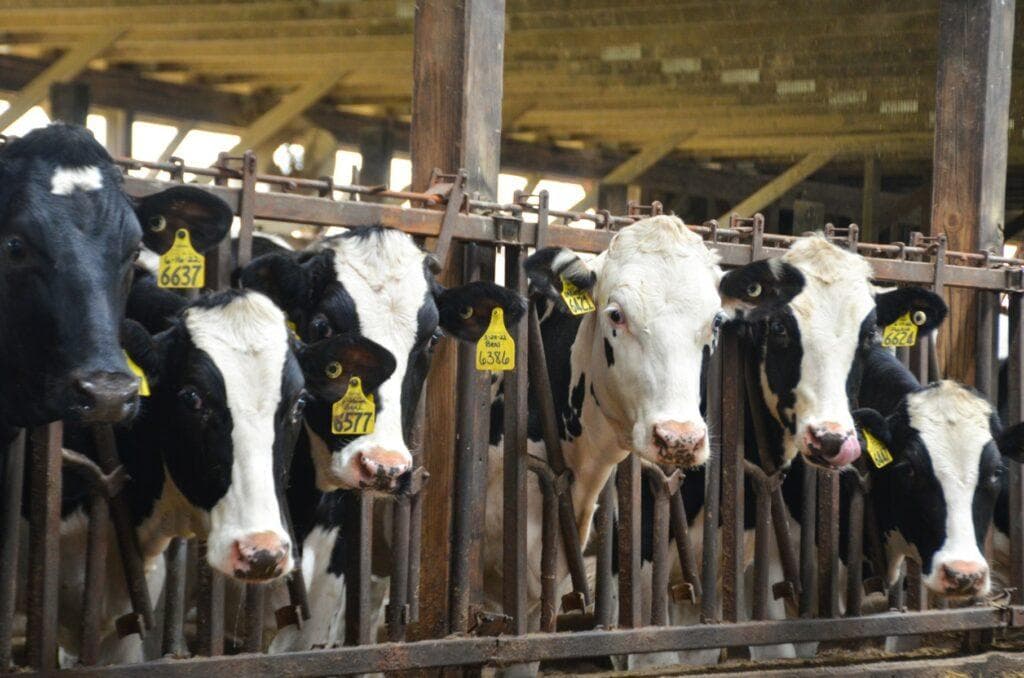
“They spoke to us about what they envisioned, and they did it in a way that made me trust them,” says Jennifer Tilton-Flood of Flood Brothers Farm. “They seemed to understand what they could see of the dairy community in Maine, the promise and potential of what could be done. They did not come in with an attitude that they knew exactly what we needed. They wanted to learn, and they wanted to make this work.”
Peaks Renewables broke ground on the biodigester at Flood Brothers Farm in May 2022, and by June 2023 they were producing natural gas. Because of the lower energy content of digested cow manure compared to raw food waste, the folks at Peaks Renewables came up with an innovative way to meet their energy demands—a way that drew upon the methodology that dairy farms have been leaning into for years now: cooperation.
When it comes to cooperation, dairy farms are a leading example of what can be accomplished with a little bit of community. Cooperatives keep many Maine dairies running, whether it be the hardworking farms that come together to send their milk to Oakhurst Dairy, the cooperation that leads to the tasty cheeses of Cabot Creamery, the Maine Dairy Industry Association or the Micro Dairy Cooperative. Cooperation is what keeps Maine’s dairy industry going, and the biodigester at Flood Brothers Farm is no exception.
In addition to the over 3,000 cows of Flood Brothers, Peaks Renewables collects cow waste from five other Maine dairy farms: Gold Top Farm, Somerset Farm, Wright Place LLC, Taylor Dairy Farm, and Heifer Haven Farm.
“All of this tries to work into the existing operations and not screw them up,” says King. “All of their manure gets loaded into lagoons, then we pick it up. We have trucks that come every day to the facility, drop off the waste into the digester.” It takes 23 days for the manure to make its way through the digester, separating into usable natural gas as well as solid and liquid waste. “The same trucks will take the liquid back to the farms and put it in a lagoon for fertilizer.”
After the natural gas is extracted, solid and liquid waste remain. The soft, pulpy solid waste can be used as bedding, and the liquid waste can be spread as fertilizer on the fields. In this way, the biodigester isn’t just taking cow poop and heating homes; it’s also reducing road time, field time, and fuel inputs in feeding the fields and bedding the cows.
“We wanted to take existing things and squeeze out a little more good,” states King.
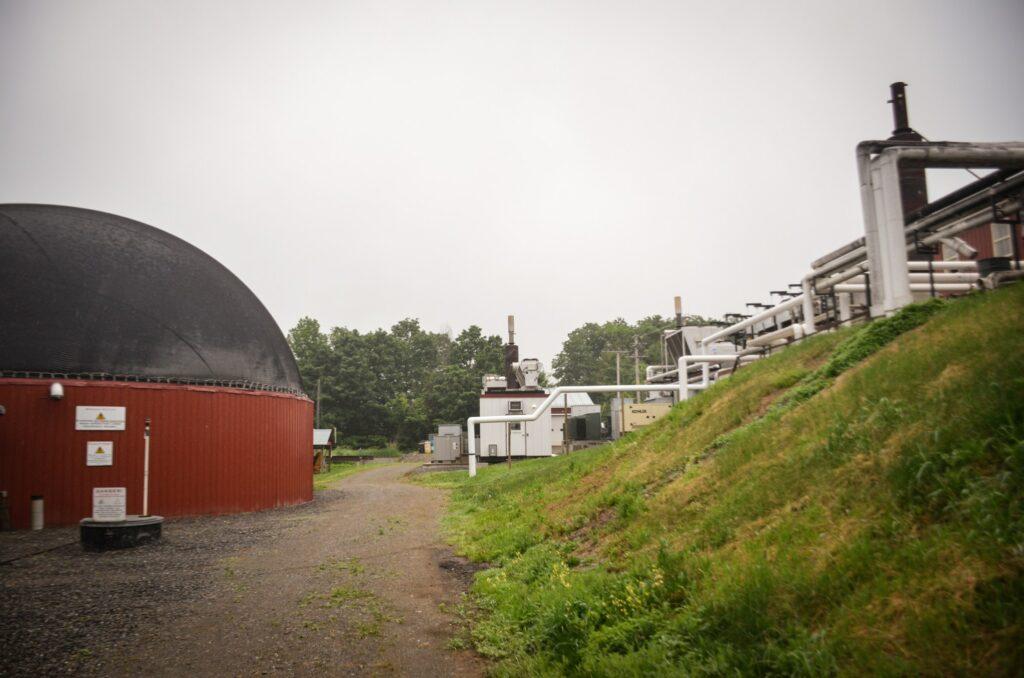
The biodigester at Flood Brothers Farm, operating entirely on local cow manure, should produce roughly 130,000 dekatherms per year. The natural gas is sent to Summit Natural Gas, an affiliate company of Peaks Renewables. The energy produced is equivalent to 40% of Summit Natural Gas’s residential load for the year.
“You have to adapt,” Tilton-Flood explains. “And every single dairy farmer I know has adapted to the change of time.”
At the moment, it requires a large quantity of manure to produce a meaningful amount of natural gas. But cooperation and diversification have been keys to Maine’s dairy farms’ success all along. A cooperative model such as the digester at Flood Brothers Farm can produce enough natural gas to be an advantageous business. Farms no longer spend thousands on bedding, and they know exactly what goes into the fertilizer they spread on their fields.
“The digester adds to the circulatory systems that exist in our part of the food system,” Tilton-Flood notes. “It expands it so that so many more people can benefit: either receiving natural gas, or as a farmer seeing time in your day saved, getting money from inputs, and getting a more efficient product. You have less dependency on other sources for bedding and fertilizer.”
“True efficiency is when it really pays off for the farmer, the farm workers, and the soil,” she says. “It isn’t waste—it’s manure. It is black gold; it is opportunity, potential, and promise.”




